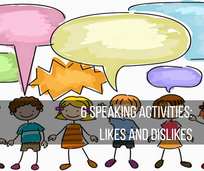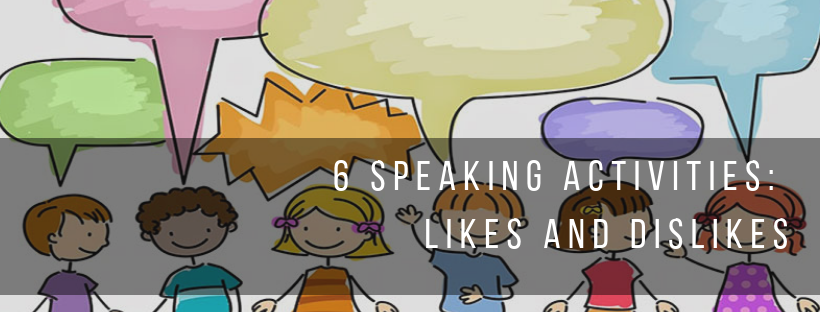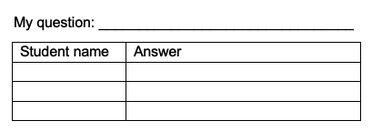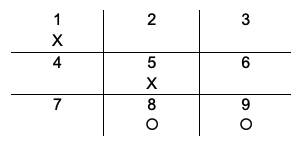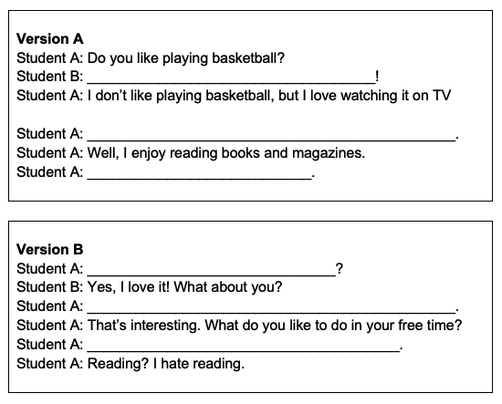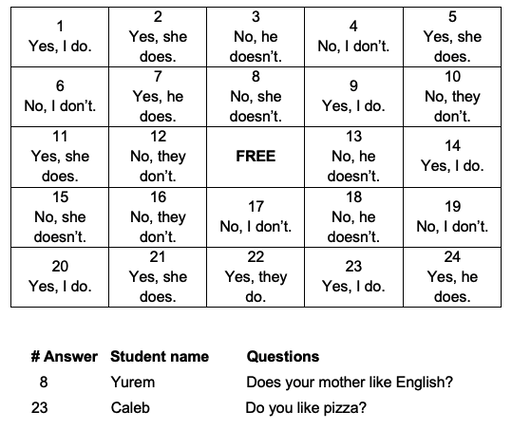- T gives each student a question, for example in a cut-up form.
- Ss mingle asking others and take notes.
- At the end, T asks Ss to sit back down and give a report to the class.
Lower level questions
- Do you like cats?
- What is your favorite food?
- What types of music do you like?
Higher level questions
- What was your most memorable birthday?
- Where is the best place to eat in your town? Why is it so good?
- What are some of the benefits of traveling alone?
- Have you practiced extreme sports?
- T writes questions on cards and place them on the desk.
- T asks 5 Ss to pick one question card.
- T asks the rest of the class to close their eyes or put their heads down.
- The 5 Ss put quietly their card on the other’s Ss’ desks and then come back to the front.
- T asks Ss to open their eyes and one by one, T asks Ss who has a card to stand in front of the S who they think has given them the card and read the question aloud.
- If the card does not match the person who gave it, that person will give a negative response to the question and the other student will go back to his/her desk. If the card matches that person, the person will say a positive response and the two people will switch places.
- T draws a tic-tac-toe grid on the board. Then, write the numbers 1 through 9 on the grid. Each square has one number in it.
- T writes on a piece of paper nine easy conversation questions. Number the questions one through nine. Each question corresponds to one square on the tic tac toe grid.
- T puts Ss into two teams, team “X” and team “O”.
- Ss choose which square on the tic tac toe grid they want to try to get. When they choose a number then T asks them the corresponding question. They get the “X” or “O” on that square if they answer the question with no mistakes.
- Do you like movies?
- Does your mother like eating chocolate cookies?
- What’s your favorite hobby?
- What are your all-time favorite movies?
- What kinds of programs don't you like?
- What are your favorite kinds of books?
- T creates two different versions of a dialogue and hand out version A to Student A and version B to Student B. The idea behind this is all the B section sentences that are missing on version A appear on version B; and vice versa.
- Ss have to read out loud and listen to and write down sentences from the other student’s paper.
- T writes on the board “What do you have in common?” and asks Ss to ask questions to each other to learn more about themselves.
- Ss have to find five things that they have in common with the other people in the class. Ss take notes.
- When Ss finished, T asks volunteers to read their list of things in common.
Alternative: Use categories of things that they all have in common. This can include anything from favorite sport to least favorite food. This works better with teams.
- T gives Ss a bingo card.
- Ss asks questions to each other to elicit an answer that matches a square on their card. For example, if the square of their card says, “No, she doesn’t “, then the S has to ask a question to a classmate to elicit that answer, e.g: “Does your mother like English? (Yes/No Question).
- Once an answer has been elicited, that square can be crossed off on the card. The first S cross off a certain number of squares (T decides how many squares means a victory — e.g. five in a row, or the whole card) is the winner and the winner shouts “Bingo!”
- Finally, the winner shares the Ss’ answers with the class.
